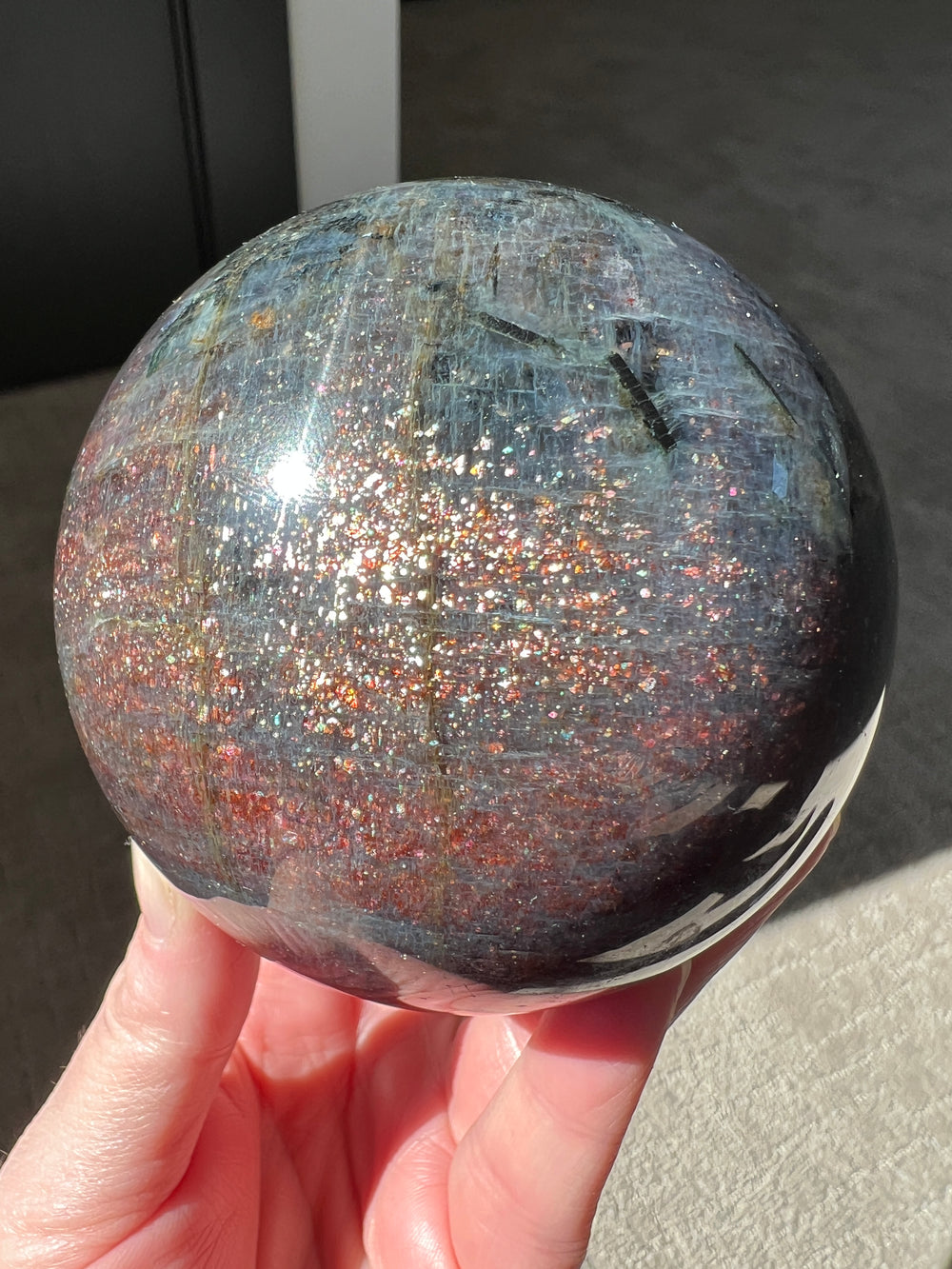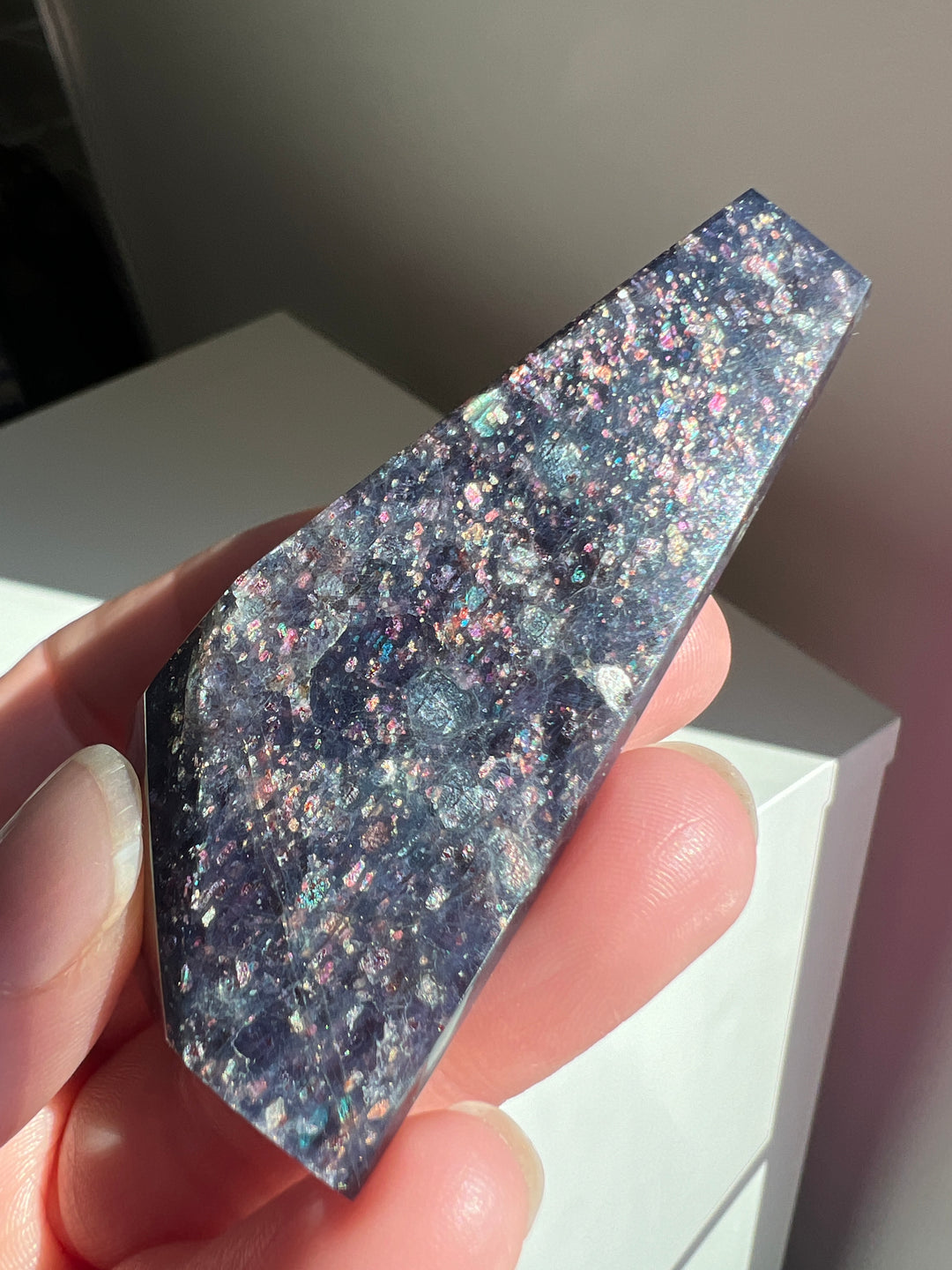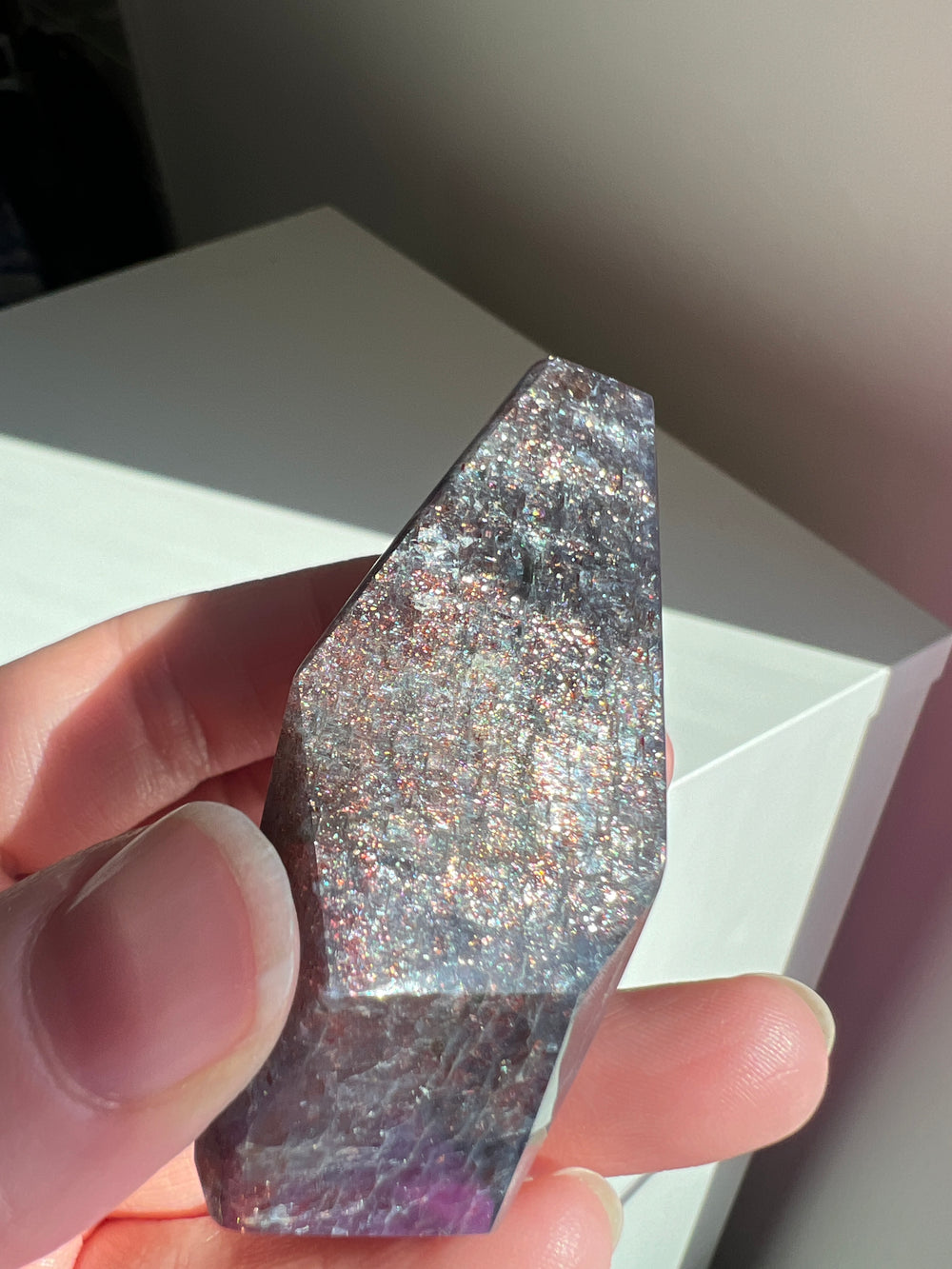Iolite | FAQ
Q: What is Iolite? A: Iolite, also known as Cordierite or "water sapphire," is a gemstone known for its strong pleochroism, showing different colors when viewed from different angles. Typically, Iolite appears as violet-blue, but it can also display yellowish-gray to blue hues.
Q: What healing properties are attributed to Iolite? A: Iolite is believed to aid in navigating life's journeys, both physically and spiritually. It's thought to enhance intuition, provide guidance during times of change, and assist in understanding and releasing the causes of addiction.
Q: How can Iolite be incorporated into meditation or spiritual practices? A: In meditation, Iolite is used to stimulate the third eye chakra, enhance psychic abilities, and promote visualizations. It's believed to help in accessing deep inner knowledge and understanding.
Q: What unique characteristics does Iolite possess? A: Iolite's most notable characteristic is its pleochroism, which causes it to display different colors depending on the viewing angle. This effect ranges from deep blue to violet to clear or yellowish.
Q: What is the Mohs hardness of Iolite? A: Iolite has a Mohs hardness of 7 to 7.5, making it relatively hard and suitable for use in various types of jewelry.
Q: Is Iolite suitable for use in jewelry making? A: Yes, its hardness and striking color transitions make Iolite an attractive choice for rings, pendants, earrings, and other jewelry pieces.
Q: How should Iolite be cared for and cleaned? A: Iolite should be cleaned with lukewarm soapy water and a soft brush or cloth. Avoid exposure to harsh chemicals and extreme temperature changes to maintain its color and clarity.
Q: What significance do the color and properties of Iolite hold? A: Iolite's deep blue color is often associated with exploration and discovery, both of the physical world and the inner self. Its properties are believed to enhance intuition, insight, and spiritual growth.
Q: What metaphysical properties are associated with Iolite? A: Metaphysically, Iolite is said to enhance understanding, provide clarity in difficult situations, and aid in recovering balance in life. It's also believed to help in navigating through the uncertainties and challenges of life.
Q: What are the geological properties of Iolite? A: Geologically, Iolite is a magnesium iron aluminum cyclosilicate mineral. It forms in metamorphic rocks and sometimes in igneous rocks like granite.
Q: Can you explain the scientific properties of Iolite? A: Scientifically, Iolite is known for its orthorhombic crystal system and pleochroic properties, caused by the different absorption of light in different crystallographic directions.
Q: What is the mineral composition of Iolite? A: The chemical formula of Iolite is (Mg,Fe)2Al4Si5O18, indicating that it consists of magnesium, iron, aluminum, silicon, and oxygen.
Q: Does Iolite fade or change color over time? A: Iolite is relatively stable in color, but like many gemstones, prolonged exposure to direct sunlight may cause some fading.
Q: How can I distinguish between real and fake Iolite? A: Real Iolite displays distinctive pleochroism, showing different colors from different angles. Fakes may not exhibit this characteristic and may have more uniform coloration.
Q: How is Iolite formed? A: Iolite forms in metamorphic rocks, often as a result of high pressure and temperature conditions. It can also occur in igneous rocks like granite and pegmatites.
Q: Are there different types or variations of Iolite? A: Iolite typically varies in terms of color intensity and clarity. The most desirable Iolite has a deep, saturated blue color with good transparency.
Q: What's the historical significance of Iolite? A: Historically, Iolite was used by Viking navigators as a polarizing filter to determine the exact position of the sun on overcast days, aiding in their legendary navigation skills.
Q: What is the origin of Iolite? A: The name "Iolite" comes from the Greek word 'ios', meaning violet, referencing its violet-blue color. It is found in various locations worldwide, including India, Sri Lanka, and Madagascar.
Q: Where is Iolite typically found? A: Significant deposits of Iolite are found in India, Sri Lanka, Madagascar, Zimbabwe, and Brazil, among other countries.
Q: How rare is Iolite? A: Iolite is not as common as some other gemstones but is generally available on the market. High-quality stones with deep color and clarity are rarer and more sought after.









